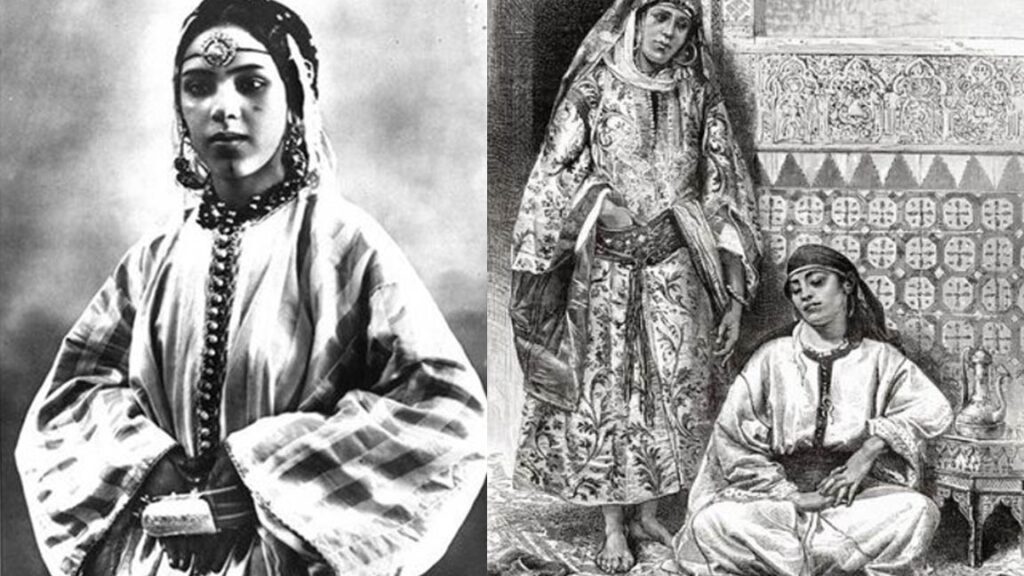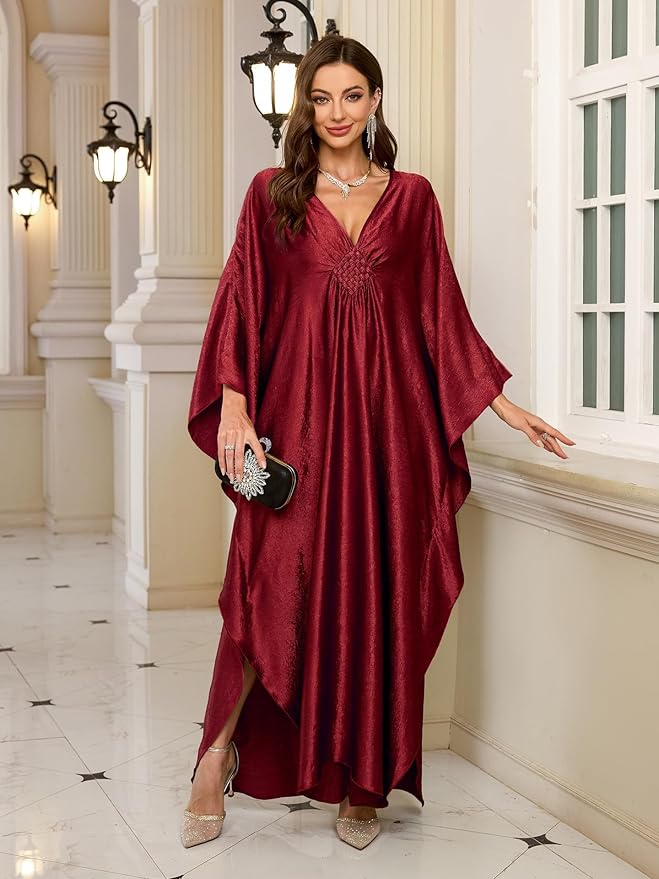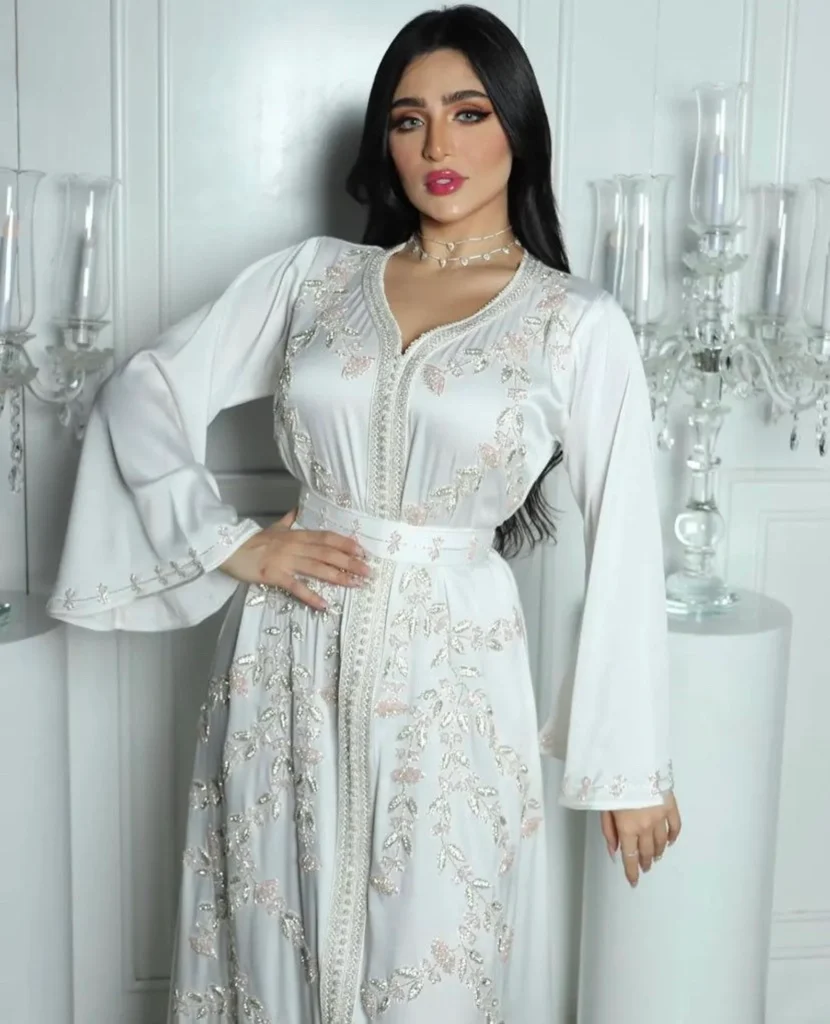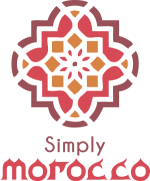
The Moroccan caftan is one of the most beautiful symbols of Moroccan culture. It represents elegance, heritage, and skilled craftsmanship. For centuries, Moroccan women have worn the caftan to celebrate weddings, family gatherings, and cultural events. Today, the caftan continues to evolve while staying connected to its historic roots.
The History of the Moroccan Caftan
The caftan has a long history in Morocco. Its origins date back more than a thousand years to the Idrissi dynasty. Early influences came from Arab traditions and Andalusian fashion brought by families who settled in cities like Fes, Tetouan, and Rabat.

During the Almoravid and Almohad dynasties, Moroccan artisans refined the garment and added new embroidery styles. In the Marinid and Saadian periods, the caftan became a symbol of status. Members of the royal family wore richly decorated caftans during official ceremonies. The arrival of skilled Andalusian craftsmen introduced fine silk weaving, detailed motifs, and luxurious fabrics.
By the time of the Alaouite dynasty, the caftan became the official ceremonial dress for Moroccan women. It was worn during weddings, religious celebrations, and national events. This tradition continues today.
Craftsmanship and Techniques
Moroccan artisans play a major role in the beauty of the caftan. Every detail takes time and precision.
Embroidery or Tarz
Hand sewn patterns created with silk or metallic thread. Each region has its own style such as Tarz Fassi from Fes or Tarz Rbati from Rabat.
Sfifa
A decorative trim made from silk or metallic thread. Sfifa outlines the caftan and adds structure.
Aakad
Handmade silk buttons that run down the caftan. These buttons require experience and careful technique.
Regional Patterns
Designs from Zemmour, Tetouan, Rabat, or Fes each bring their own character.
These elements are part of what makes each Moroccan caftan unique.
Fabrics Used in Moroccan Caftans
Caftans come in many fabrics depending on the occasion.
- Silk for weddings and elegant events
- Velvet for cooler seasons
- Brocade for traditional and royal styles
- Chiffon for light and flowing modern caftans
- Crepe for simple and contemporary designs
Many Moroccan designers combine fabrics to create texture and movement.
The Different Types of Moroccan Caftans
Takchita
A two layer outfit with an inner dress and an outer layer. It is very common at weddings and special celebrations.

Classic Caftan
A single layer dress worn for family gatherings and formal events.

Modern Caftan
A contemporary version with lighter fabrics and modern cuts while keeping traditional details.

Bridal Caftan
Often the most detailed piece in a Moroccan wedding. It can take weeks of work and features luxurious embroidery and accessories.

Regional Styles Across Morocco
Each Moroccan city has its own approach to caftan design.
Fes
Known for Tarz Fassi, one of the most detailed traditional embroideries.
Rabat and Salé
Famous for Tarz Rbati with geometric and floral motifs.
Tetouan and Tangier
Influenced by Andalusian craftsmanship with colorful threadwork.
Marrakech
Bold colors and modern cuts combined with traditional touches.
These regional differences make the Moroccan caftan one of the most diverse garments in the world.
The Role of the Caftan in Moroccan Weddings
The caftan is an essential part of Moroccan wedding traditions. Brides often wear several outfits throughout the ceremony and the caftan or takchita is always included. The bride may also wear a luxury caftan during the Amariya entrance, which is one of the highlights of the celebration.
The Modern Evolution of the Caftan
Modern Moroccan designers have brought the caftan to international fashion shows and red carpet events. They keep the traditional structure but add contemporary cuts, lighter fabrics, and new color palettes. Today, Moroccan women also wear simple caftans during Ramadan dinners, engagement parties, or family gatherings.
How to Style a Moroccan Caftan
- Jewelry such as gold pieces or Amazigh bracelets
- A decorative belt called Mdamma
- Traditional slippers known as Cherbil
- Hair accessories depending on the celebration
These elements complete the traditional look.
Where to Buy Authentic Moroccan Caftans
Travelers can find caftans in several places.
- Artisan workshops in Fes and Rabat
- Souks in Marrakech, Casablanca, and Tetouan
- Boutiques of modern Moroccan designers
- Local markets known for handmade textiles
Simply Morocco can also guide travelers to authentic ateliers and shopping experiences.
Final Thoughts
The Moroccan caftan is more than a piece of clothing. It is a symbol of heritage, creativity, and national pride. From ancient dynasties to modern fashion, the caftan continues to reflect the cultural identity of Morocco. Whether you are exploring Moroccan traditions or searching for an authentic caftan, this garment offers a deep connection to Moroccan craftsmanship and history.
Discover the wonders of Morocco through our customized and private tours, immersing yourself in the country’s vibrant cities, breathtaking landscapes, and rich cultural heritage. With meticulous attention to detail and personalized service, we ensure an unforgettable journey that caters to your specific interests and exceeds your expectations.
